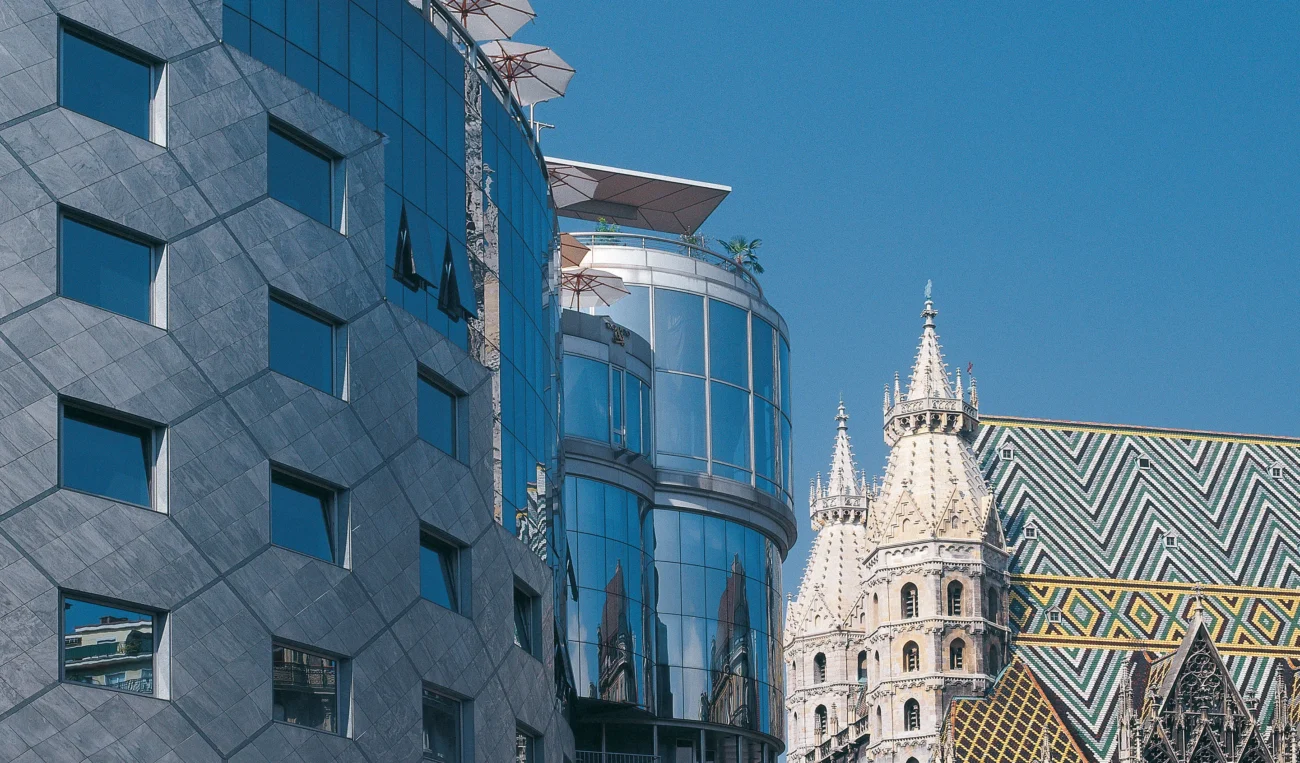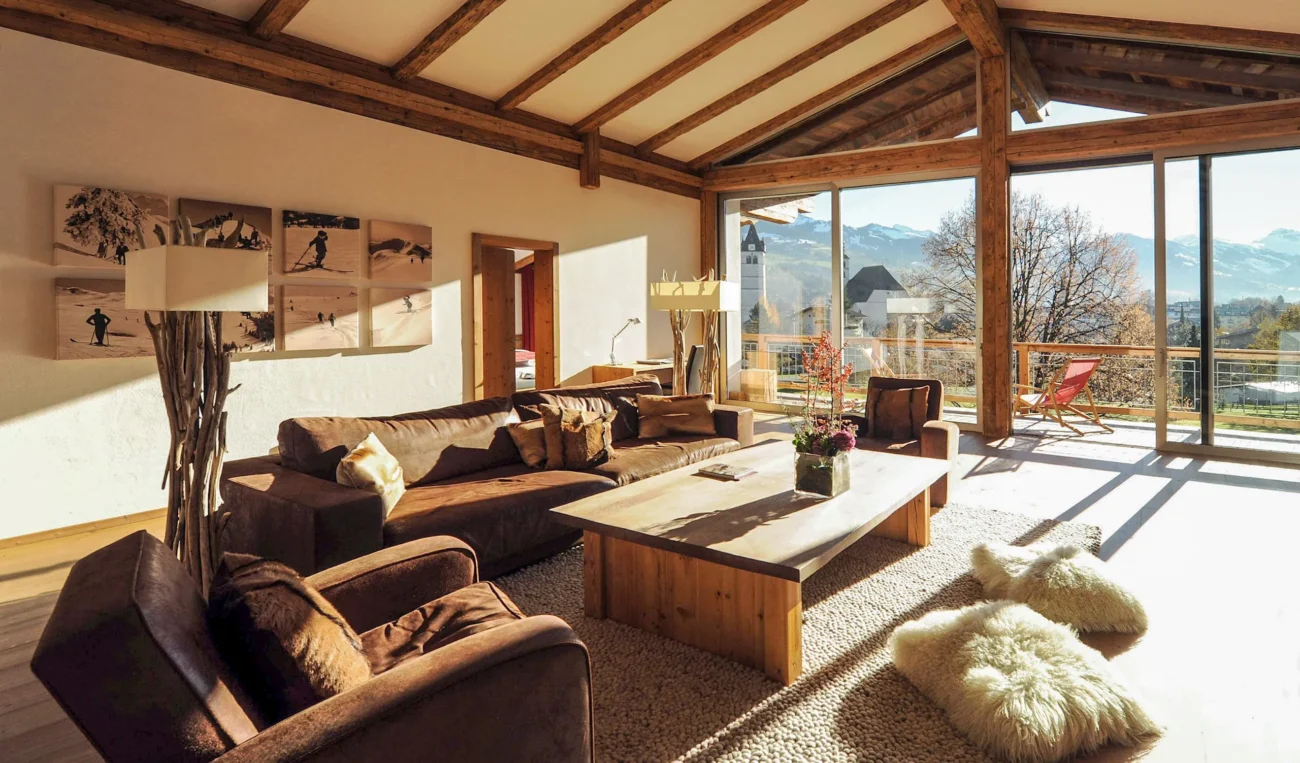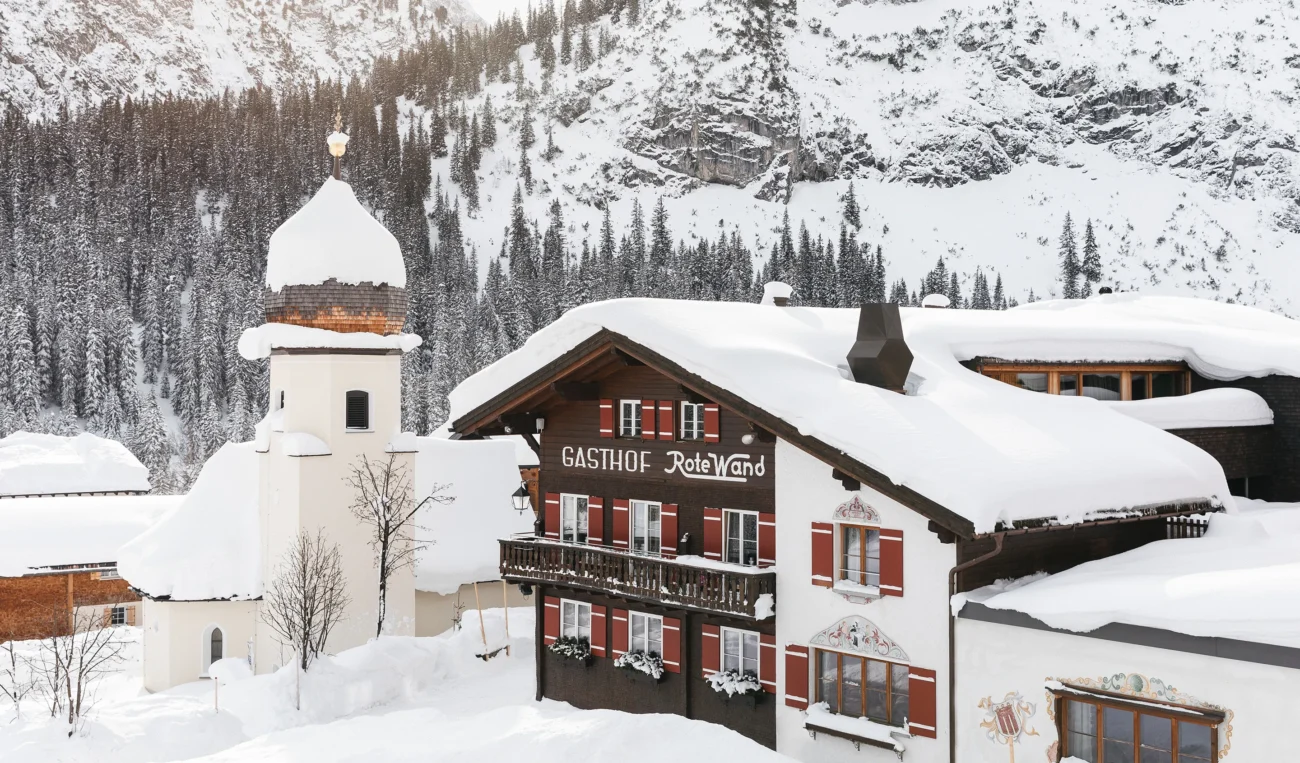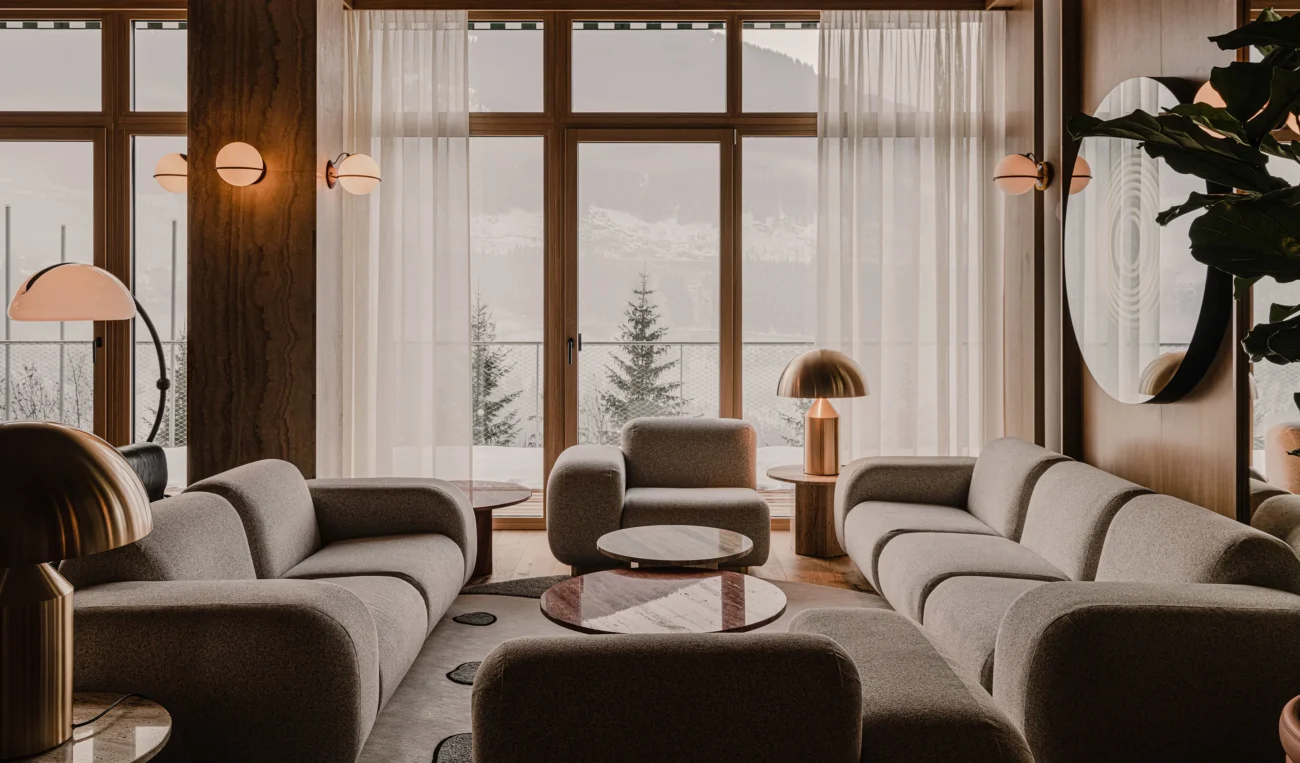AUSTRIA
The pioneering postmodern architect designed a futuristic interior that effortlessly combines high-tech and low-tech elements. The four-story structure, made of sparkling glass and metal, has been transformed into 43 spacious guestrooms and suites that provide luxurious comfort and breathtaking views of the city’s most magnificent square.
The iconic creature, central to Ursula Schelle-Müller’s design concept, serves as a bridge between contemporary minimalist aesthetics and classic Alpine textures. In the lobby, sculpted wooden lampshades and bucket-shaped leather armchairs coexist with a reception desk meticulously crafted by a local cabinetmaker. The gardens seamlessly blend the boundaries between mountains and a church-strewn urban landscape.
Rote Wand’s design philosophy revolves around preserving the historical essence of existing structures while incorporating modern amenities. This approach is exemplified by Rote Wand Chef’s Table, situated within the repurposed schoolhouse.
The historical significance of the original building, constructed in 1881, played a pivotal role in the structure’s resurgence. The former property underwent a contemporary renovation that harmoniously incorporates the timelessness of the surrounding area. The hotel’s Alpine resort design, evoking the aesthetics of the 1960s, incorporates elements of Viennese café style. Notably, the hotel’s expansive windows offer breathtaking views of the region’s picturesque landscapes.
Günther Domenig, a recipient of the Austrian State Prize for architecture, has designed Augarten with a harmonious blend of reflective surfaces, inwardly inclined planes, and exterior staircases. The structure exudes a pervasive sense of luminosity and transparency, a testament to Domenig’s meticulous attention to light and proportion. In his own words, “I am akin to an artist—an artist is liberated.”
 Chapter Roma
Chapter Roma

